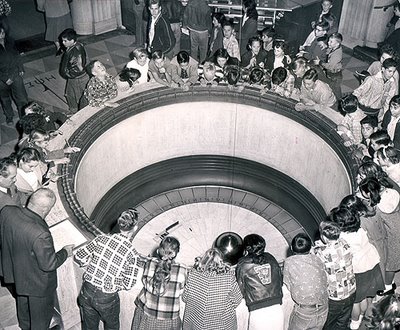 There is something about the Griffith Observatory, which reopens this week after a four-year renovation, that makes it more than mere landmark, something akin to an exemplar of Los Angeles itself. The observatory was the indirect outgrowth of a scandal, kissed by criminality. It was willed into existence by grand ambition, delayed by politics, hashed out in the courts and then, at last, it came of age in gilded splendor: a fan favorite that drew millions in its first years. And as the observatory grew to maturity, it found its way to film and there sealed its place as an iconic emblem of the city it perches above. "It's a powerful memory site," said D.J. Waldie, an author and observer of Los Angeles and Southern California culture. Grand and optimistic, solid in construction and radiating confidence in science, the observatory is the rare institution that binds Los Angeles to its past, he said — "a durable site for memories" in a city that "has a tendency to scrub its past clean."
There is something about the Griffith Observatory, which reopens this week after a four-year renovation, that makes it more than mere landmark, something akin to an exemplar of Los Angeles itself. The observatory was the indirect outgrowth of a scandal, kissed by criminality. It was willed into existence by grand ambition, delayed by politics, hashed out in the courts and then, at last, it came of age in gilded splendor: a fan favorite that drew millions in its first years. And as the observatory grew to maturity, it found its way to film and there sealed its place as an iconic emblem of the city it perches above. "It's a powerful memory site," said D.J. Waldie, an author and observer of Los Angeles and Southern California culture. Grand and optimistic, solid in construction and radiating confidence in science, the observatory is the rare institution that binds Los Angeles to its past, he said — "a durable site for memories" in a city that "has a tendency to scrub its past clean."The observatory got its start through the generosity of Griffith J. Griffith, an early Los Angeles silver mining magnate with plenty of need for redemption. In 1903, Griffith forced his wife to kneel and pray and then shot her in the head. She lived. He went to prison and then, after nearly two years behind bars, returned home to Los Angeles and resumed his life. A free man again, Griffith in his later years devoted much time and attention to leaving a better Los Angeles. He donated the vast and hilly land that was to become Griffith Park — more than 4,000 acres — and he offered to give the city $100,000 to build an observatory on the property. Describing the project, Griffith captured early Los Angeles' sense of boundlessness and reach. "Ambition," he told the city's mayor, "must have broad spaces and mighty distances."
 PROOF EARTH ROTATES: A visit to the Griffith Park Observatory has been a rite of passage for generations of Southland schoolchildren. An estimated 50,000 students a year visited the observatory before it was closed for renovations. In this March 1953 photo, a group of schoolchildren watches a replica of a Foucault pendulum, one of the observatory's original exhibits.
PROOF EARTH ROTATES: A visit to the Griffith Park Observatory has been a rite of passage for generations of Southland schoolchildren. An estimated 50,000 students a year visited the observatory before it was closed for renovations. In this March 1953 photo, a group of schoolchildren watches a replica of a Foucault pendulum, one of the observatory's original exhibits.(Excerpts from an article by Jim Newton, Los Angeles Times)
No comments:
Post a Comment